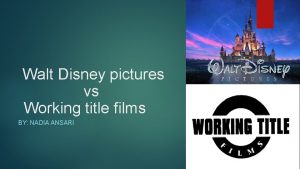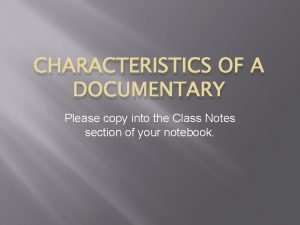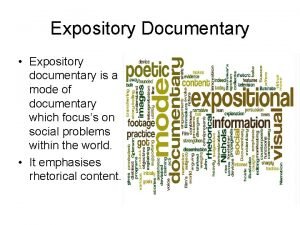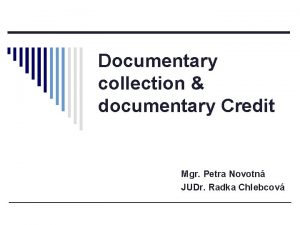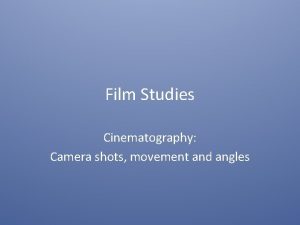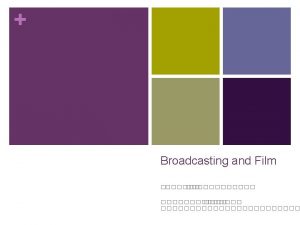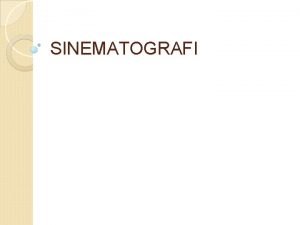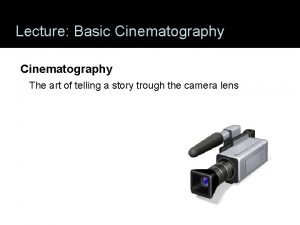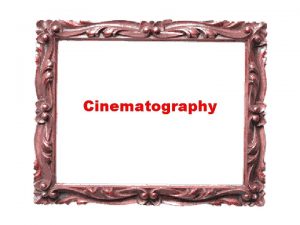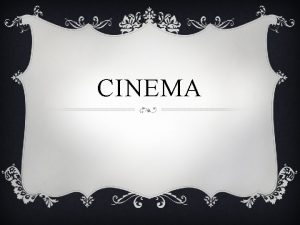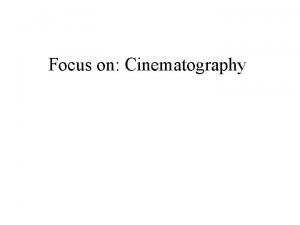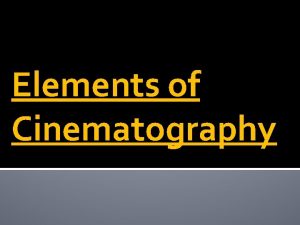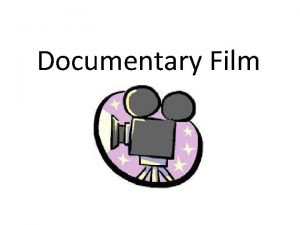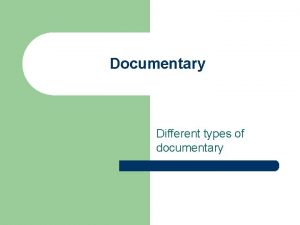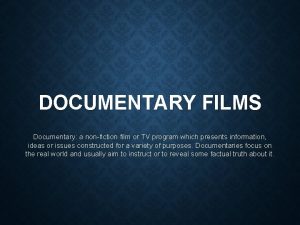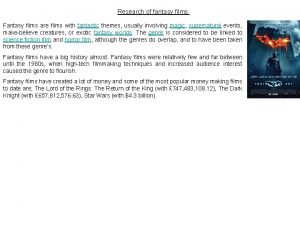DOCUMENTARY FILMS Cinematography in documentary films the art









- Slides: 9

DOCUMENTARY FILMS

Cinematography in documentary films the art and science of making a motion picture

What is the purpose in making a historical documentary? • Are historical documentaries a good way to learn about the past? • What kind of viewers are documentaries made for? • Are they made just to provide information or just for entertainment? • Do documentaries present a balanced and fair depiction of events? -How can you tell? • What is the difference between a documentary and a propaganda film?

Components of cinematography 1 How are camera angles used? • establishing shot • long shot • medium shot • close up • over the shoulder • high angle • low angle • panning and tracking Here’s a site that gives you examples of different camera angles: http: //www. learner. org/exhibits/cinema/directing 2. html

Components of cinematography 2 How do directors use various elements of film craft to add drama, build mood, and to add credibility and authenticity? • • • setting background lighting special effects framing the shot • • • music sound effects costuming & makeup editing cuts credits

What methods are used to communicate the history in the documentary? Where is there focus on • narration/voice overs • dramatisation of events • weaving in contemporary film, photographs and other artifacts How and why is music used? • Is it a primary source/modern? How and why are sound effects and special effects used?

How do the direction of the film influence how the history in the documentary is interpreted? • Does the documentary focus on any particular viewpoints, social groups, values or morals? • How are differences between the past and present highlighted? • Do events and people evoke emotional reactions ? • Does the audience identify with one character and one voice or with many eyes and voices?

Movie Scene Description Historical item/aspect A structure for analysing the history in a film Scientific significance Evidence of accuracy or inaccuracy Social significance Evidence of accuracy or inaccuracy

Movie – A Knight’s Tale Scene Description – Under arrest William Thatcher is placed under arrest. As part of his incarceration he is placed in stocks in the village square. Historical item/aspect – the use of stocks for punishment Scientific significance – Stocks were of a very elementary construction, usually wood and sometimes with metal locks. Stocks could be easily set up in public places. Evidence of accuracy or inaccuracy Social significance – Stocks are often represented as a form of punishment of the time (C 15 th). It was common to put prisoners on public display as part of their punishment. That stocks were used by the Anglo-Saxons is proved by their often figuring in drawings of the time (see Harleian MSS. No. 65). The second Statute of Labourers (1350) ordered the punishment for unruly artisans. http: //www. 1911 encyclopedia. org/Stocks_(Punishment)
